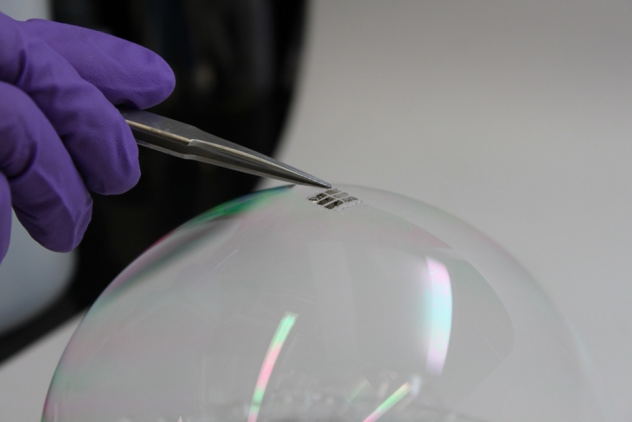Future solar energy breakthrough from MIT sees world's thinnest cell to power next-gen devices

Scientists from the Massachusetts Institute of Technology (MIT) have made a breakthrough in solar technology to produce a cell so thin and light that it can float on a bubble without bursting it. The team at MIT created the lightest solar cell ever made using a new fabrication process that could open up a whole new world of possibilities as it can be utilised in a host of once-unthinkable applications from being worn on clothing to embedded into sheets of paper or placed on helium balloons.
The solar cells are 1/50 the width of a human hair and are so light if the researchers breathed too close to them, they would simply blow away. Yet this low weight to high power output ratio is exactly why scientists are getting very excited about the breakthrough – as they can be placed almost anywhere without weighing an object down, like in aircraft, but still produce more power than traditional solar cells.

The super light cells were produced using a new method that involves manufacturing the solar cell, the substrate that supports it and protective coating in one go. Researchers used a flexible polymer called parylene for both the substrate and protective coating as a replacement for the glass that is traditionally used. While glass is more robust, it adds to the weight of panel. The whole process takes place in a vacuum and took years to perfect, although the team says it sounds easy now that they have done it.
"We put our carrier in a vacuum system, then we deposit everything else on top of it, and then peel the whole thing off," explains MIT research scientist Annie Wang.
A typical silicon-based solar module, whose weight is dominated by a glass cover, may produce about 15 watts of power per kilogram of weight, the new cells have already demonstrated an output of 6 watts per gram — about 400 times higher.
MIT says these thinnest, lightest solar cells ever made may take years to develop into a commercial product but their laboratory proof-of-concept shows a new approach to making solar cells that could help power the next generation of portable electronic devices.
© Copyright IBTimes 2025. All rights reserved.






















